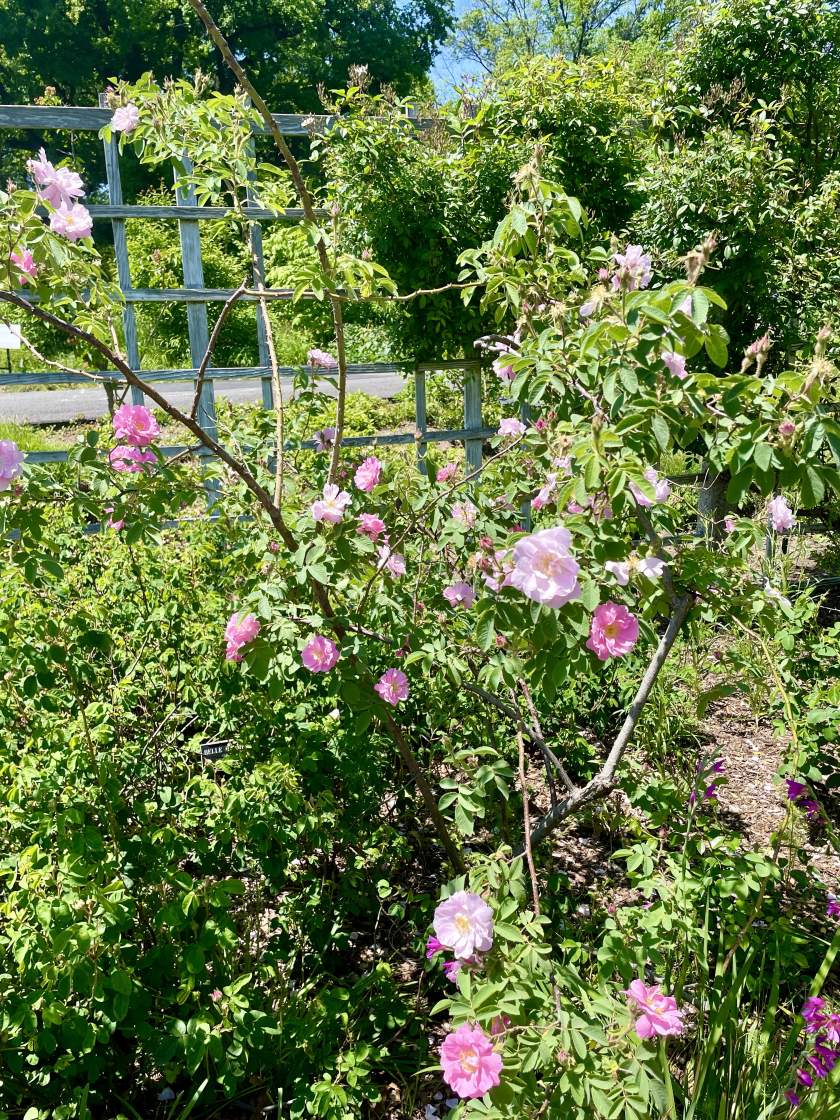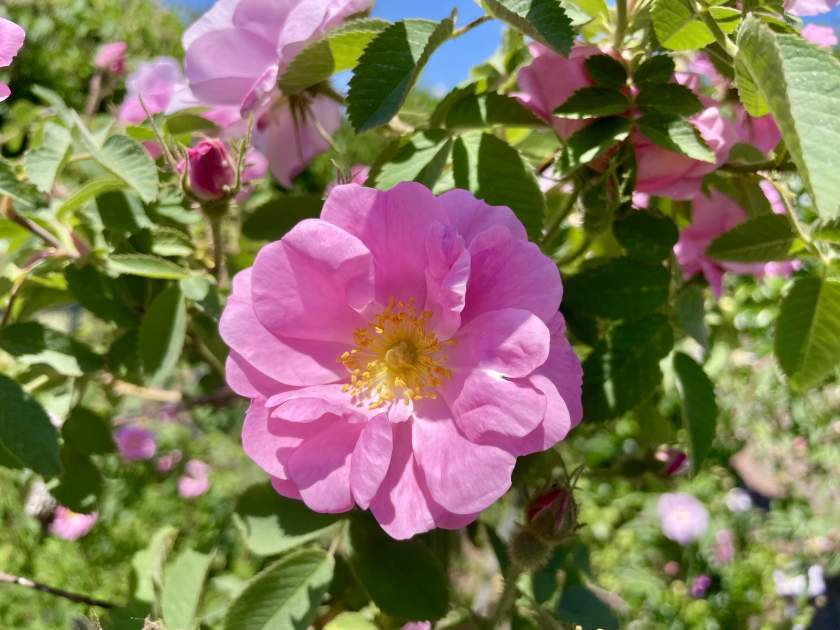Unveiling the Timeless Beauty of Rosa ‘Duplex’: A Fragrant Delight
Background and Origin: Rosa ‘Duplex’ is a captivating double rose that has graced gardens for centuries. It was introduced before 1770 and gained popularity in England during the 1760s. This exquisite rose variety was aptly named “Duplex” due to its distinctive feature of having two sets of petals. Its outer petals are pure white, while the inner petals display a charming darker pink hue. ‘Duplex’ is part of the Rosaceae family and is also known by other names such as Duplex, Pomifera Duplex, Rosa pomifera (double form), Rosa villosa à fleurs semi-doubles, Rosa villosa Duplex, Rosa villosa var. duplex Weston, Wolley-Dod’s Rose and “Wild Rose.”
Characteristics and Description: Rosa ‘Duplex’ is a robust and vigorous grower, capable of reaching a height of up to 9 feet. This large shrub rose exhibits a once-blooming habit, but occasionally repeats later, captivating garden enthusiasts with its abundant display of flowers during its designated blooming season. The flowers of ‘Duplex’ are approximately 3 inches in diameter and exude a strong and enchanting fragrance that fills the air with a delightful apple aroma. It also has fragrant leaves.
Cultivation of Rosa ‘Duplex’:
To ensure the successful cultivation of Rosa ‘Duplex’, consider the following guidelines:
Sunlight: Plant ‘Duplex’ in an area that receives full sun to maximize its growth and flowering potential. Adequate sunlight promotes healthy foliage and vibrant blooms.
Watering: Regular watering is essential for the well-being of Rosa ‘Duplex’, particularly during hot and dry weather conditions. Ensure the soil is kept moist but not overly saturated to prevent waterlogging and potential root rot.
Soil: ‘Duplex’ thrives in well-drained soil with a slightly acidic pH level ranging from 6.0 to 6.5. Proper soil drainage is crucial for maintaining healthy roots and overall plant vigor. Additionally, spacing the roses at least 3 feet apart allows for optimal air circulation, reducing the risk of fungal diseases.
Pests and Diseases: Like many roses, ‘Duplex’ is susceptible to pests and diseases such as aphids, black spots, and powdery mildew. Regular monitoring and appropriate measures should be taken to address any infestations or disease outbreaks. Insecticidal soap or neem oil can effectively control aphids, while fungicides can be employed to combat black spots and powdery mildew.
Pruning: Prune Rosa ‘Duplex’ in the spring to remove dead or damaged wood. This promotes healthy growth and shape control. Additionally, spring pruning stimulates new growth and encourages optimal flowering.
Propagation:
There are two common methods for propagating Rosa ‘Duplex’:
- Cuttings: Select a healthy stem measuring approximately 6 inches in length. Remove the leaves from the bottom half of the cutting and dip the cut end in the rooting hormone. Plant the cutting in a well-drained potting mix, ensuring the soil remains moist. After approximately 4-6 weeks, the cutting should root and establish itself.
- Grafting: Grafting is a more advanced propagation method. It involves joining the scion (the top part of the desired rose) onto a compatible rootstock. Grafting can be performed in the spring when the rose plants are dormant. It is advisable to seek guidance from experienced gardeners or consult horticultural resources for detailed instructions on grafting techniques.
Discover the Timeless Elegance of Rosa ‘Duplex’: Rosa ‘Duplex’ is a magnificent rose variety that has enchanted gardeners for centuries. Its white double flowers, alluring fragrance, and historical significance make it a cherished addition to any garden. With its vigorous growth habit and relative disease resistance, ‘Duplex’ is a relatively low-maintenance rose that rewards its caretakers with stunning blooms and a touch of timeless beauty. Embark on a journey to cultivate this remarkable rose and experience the joy it brings season after season.






